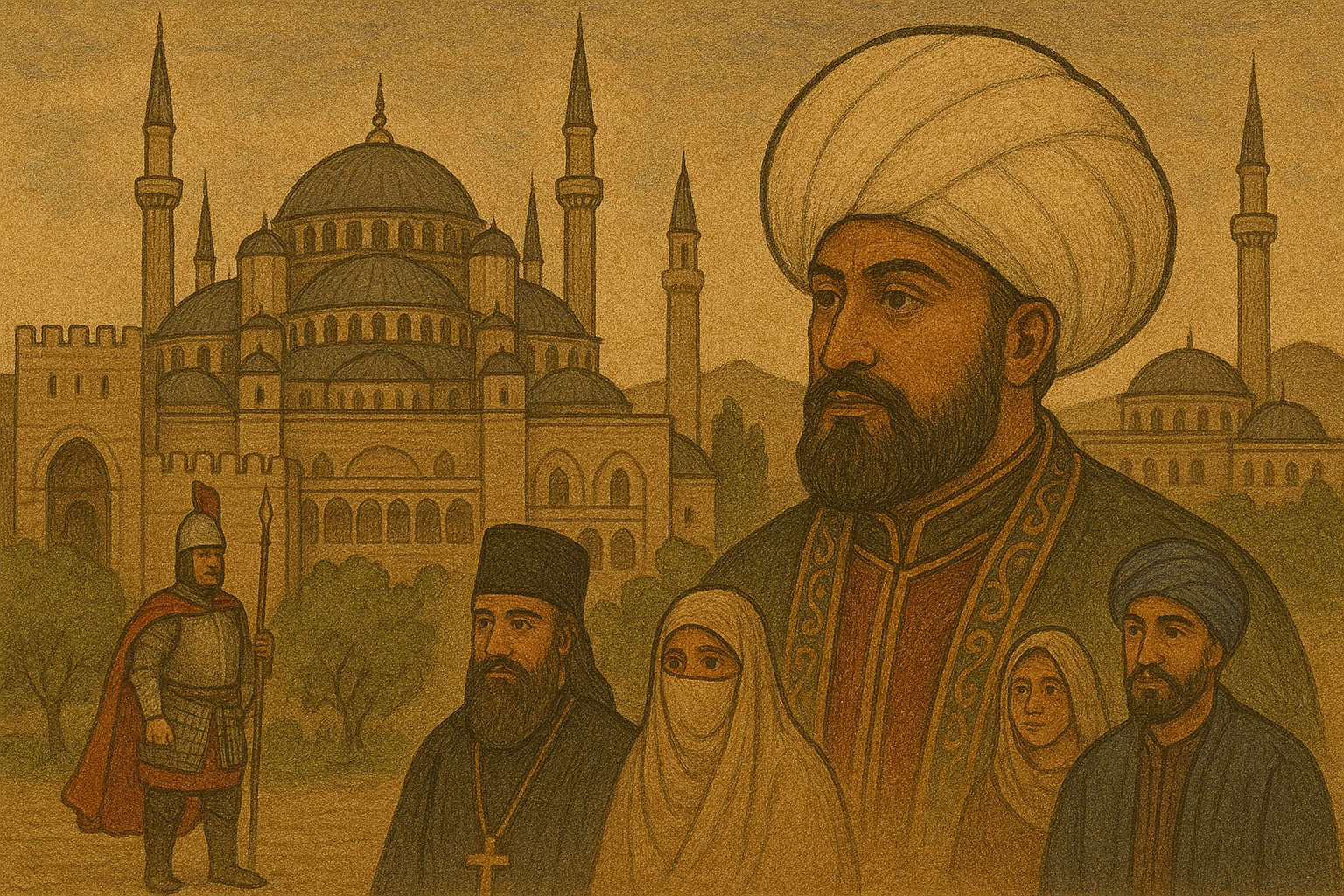Lesson 1: The Ottoman Empire (Cultures of South and Southwest Asia)
🕌 The Ottoman Empire (South and Southwest Asia)
The Ottoman Empire was one of the biggest and longest-lasting empires in the world. It started in 1299 and ended in 1922. The empire began in Turkey and grew across Europe, Asia, and Africa. It was a Muslim empire, but people of many religions lived there.
Let’s learn about the empire using SPRITE.
👫 Social Life: Life in the Ottoman Empire
The Ottoman Empire had many kinds of people—Muslims, Christians, Jews, Turks, Arabs, Greeks, and more. People lived in villages, towns, and big cities like Istanbul.
There were rich people like government leaders and traders, and poor people like farmers and craft workers.
👨🏫 Boys could go to school, and some became scholars or janissaries (elite soldiers trained from a young age). Girls usually learned at home.
📖 Story: A Christian boy named Marko was taken as a child to become a janissary. He trained hard, became strong, and one day led soldiers in battle. He stayed loyal to the sultan for life and became rich and respected.
🏛️ Political Life: Sultans and Government
The empire was ruled by a sultan (king). The sultan had absolute power. He lived in a beautiful palace in Istanbul and had many advisors.
The Ottomans used a smart government system. They had governors for each area and tax collectors. People of other religions could live in peace if they paid a special tax.
👑 One great sultan was Suleiman the Magnificent. He ruled for 46 years and made laws, built schools, and protected all people.
📖 Story: People called Suleiman “The Lawgiver” because he made new laws to help both Muslims and non-Muslims. Even Christians in Europe respected him.
☪️ Religious Life: Islam and Other Faiths
The empire was Islamic, but it allowed religious freedom. Most people were Sunni Muslims, but there were also Christians, Jews, and other groups.
People could go to their own churches, mosques, or synagogues. Religious leaders helped lead their own communities.
The sultan was seen as the Caliph—the leader of all Muslims.
📖 Story: In Istanbul, you could hear a church bell, a mosque call to prayer, and Jewish chants all in one city. It was a place of many voices and beliefs.
💡 Intellectual Life: Learning and Ideas
The Ottomans loved knowledge. They built schools, libraries, and universities. Scholars studied math, medicine, astronomy, and philosophy.
One famous scientist was Taqi al-Din. He built an observatory in Istanbul in the 1500s and made star maps. He even made clocks and instruments to study time and space.
📖 Story: Taqi al-Din used a telescope to look at the sky. He wrote books about stars, planets, and time. People came from far away to learn from him.
🔧 Technological Life: Buildings and Tools
The Ottomans were great builders. They used arches, domes, and tiles to create beautiful mosques and bridges.
One famous architect was Mimar Sinan. He built over 300 buildings, including the famous Süleymaniye Mosque in Istanbul.
The empire also used gunpowder, cannons, and ships to grow stronger.
📖 Story: Mimar Sinan once said, “A building must touch both the sky and the heart.” His mosques are still standing today, shining in the sun.
💰 Economic Life: Trade and Wealth
The empire was very rich. It sat between Europe, Asia, and Africa, so traders passed through it. They brought spices, silk, coffee, and gold.
Farmers grew food, craftsmen made rugs, metalwork, and glass, and markets were full of goods.
The empire used coins, and cities like Istanbul were full of business.
📖 Story: In the Istanbul market, you could find goods from India, Africa, and Europe. A trader might sell silk in the morning and drink sweet Ottoman coffee in the afternoon.
